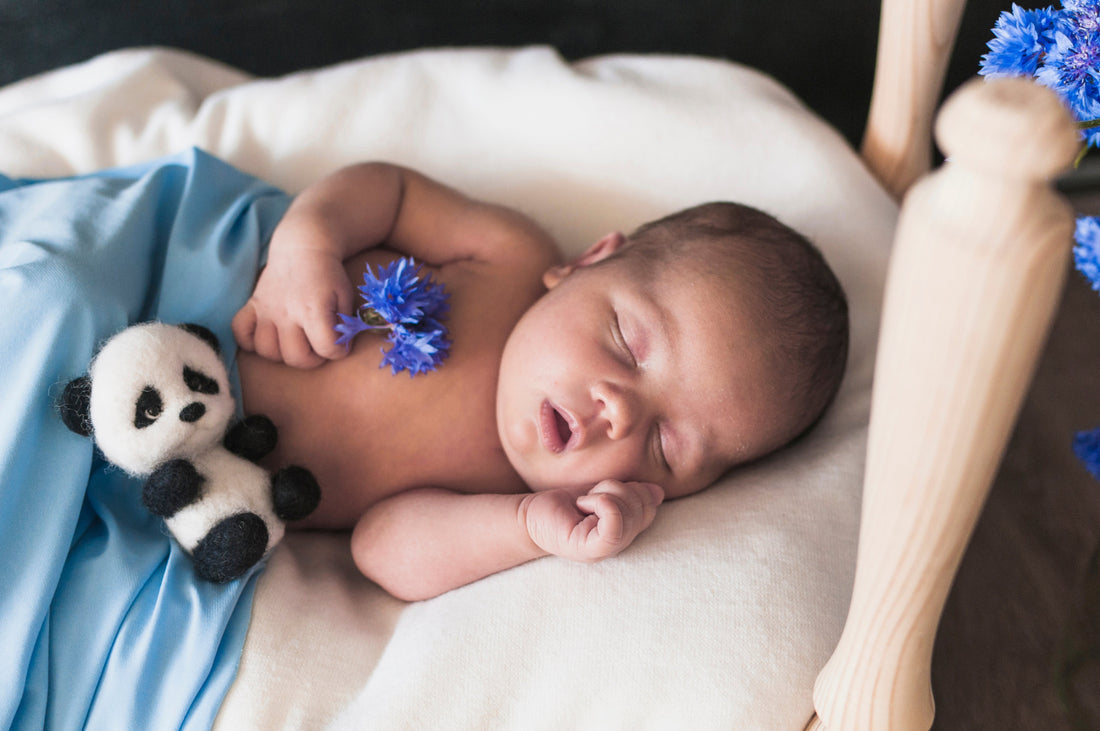
Swaddle, Sleep Sack, or Nothing? Choosing Safe Sleep Options that Actually Work
As parents, we’ve all been through navigating endless advice about how our little ones should sleep, while secretly just wishing for a few more hours of rest ourselves. Choosing between a swaddle, a sleep sack, or nothing at all can feel overwhelming. At Eco Baby, we understand the struggle of balancing safe sleep for your baby and precious sleep for yourself. This guide simplifies the options, shares safety tips, and highlights sustainable, eco-friendly choices available in India.
1. Swaddling: The Cozy Cocoon
Swaddling mimics the snug environment of the womb, helping babies feel secure and sleep longer.
Pros:
- Soothes newborns by reducing startle reflex.
- Encourages longer stretches of sleep in the early months.
- Can calm fussy or colicky babies.
Cons:
- Overheating risk if not done with breathable fabric.
- Incorrect swaddling (too tight around hips/chest) can cause hip dysplasia or breathing issues.
- Babies may outgrow swaddles quickly (usually by 2–3 months).
Best For: Newborn stage (0–2 months).
2. Sleep Sacks: The Wearable Blanket
A sleep sack (or wearable blanket) is a sleeveless sleeping bag that keeps babies warm without the dangers of loose blankets.
Pros:
- Reduces suffocation risk (no loose bedding).
- Keeps baby warm consistently through the night.
- Available in different fabrics and TOG ratings (thermal ratings for warmth).
Cons:
- Some babies resist the “restricted” feel at first.
- Need different sizes as your baby grows.
Best For: Babies 2 months and older, especially once they start rolling.
3. Sleeping Without a Swaddle or Sack
Some parents prefer to let their baby sleep in just pajamas or onesies, without swaddles or sacks.
Pros:
- Encourages natural movement, rolling, and self-soothing.
- Eliminates dependency on sleep gear.
Cons:
- Babies may kick off blankets and wake up cold.
- Parents must pay closer attention to room temperature and clothing layers.
Best For: Older babies and toddlers who can regulate their temperature and move safely.
4. Safety Guidelines Every Parent Should Know
- Temperature: Maintain the room at 20–22°C (68–72°F). Overheating is a leading risk for SIDS (Sudden Infant Death Syndrome). [Source: American Academy of Pediatrics]
- Fabrics: Use breathable, natural fabrics like organic cotton, muslin, or bamboo. Avoid polyester-heavy blends. [Source: HealthyChildren.org]
- Fit: Swaddles should be snug at the chest but loose at the hips. Sleep sacks should allow free arm movement. [Source: International Hip Dysplasia Institute]
- Position: Always place babies on their back to sleep, on a firm mattress, with no loose blankets or pillows. [Source: CDC Safe Sleep Guidelines]
5. Eco-Friendly Alternatives: Sustainable Sleep Options
Parents today want solutions that are not only safe but also eco-conscious.
- Organic Cotton: Gentle on baby skin, pesticide-free, breathable.
- Bamboo: Naturally antibacterial, hypoallergenic, thermoregulating.
- Muslin: Lightweight and breathable, great for warm climates.
Sustainable Indian Brands:
- A Toddler Thing – Organic cotton muslin swaddles and sleepwear.
- Masilo – GOTS-certified organic cotton bedding and swaddles.
- Kaarpas – Sleep sacks and swaddles made with sustainable fabrics.
- Greendigo – Organic baby essentials with certifications.
- Little By Little – Eco-conscious baby clothing and accessories.
6. Knowing When It’s Time to Transition
- From Swaddle to Sleep Sack: Switch when baby starts rolling over (2–3 months).
- From Sleep Sack to Nothing: Around 18–24 months, when baby regulates body temperature better.
- Watch for signs: Baby resisting swaddling, wriggling out, or showing signs of overheating.
7. What About Co-Sleeping?
Many parents, especially in India, practice co-sleeping—sharing the same bed or room with their baby. While it can feel natural and comforting, it comes with safety considerations.
Pros:
- Makes night feeding easier, especially for breastfeeding moms.
- Promotes bonding and emotional security.
- Parents often feel more rested with fewer trips to the crib.
Cons / Risks:
- Increased risk of suffocation, entrapment, or overheating if bed-sharing is not done safely.
- Adult bedding (pillows, blankets) can be hazardous to infants.
- Higher risks noted if parents smoke, consume alcohol, or are deep sleepers.
Room-sharing without bed-sharing (placing your baby’s crib or bassinet next to your bed) is considered the safest compromise by the American Academy of Pediatrics.
If parents choose to bed-share despite risks:
- Use a firm mattress (no pillows, loose blankets near baby).
- Place baby on their back, not tummy or side.
- Never co-sleep on a sofa or armchair.
- Keep baby away from gaps, pets, and siblings in the bed.
Eco-friendly Co-sleeping Options:
- Consider a sidecar crib / bedside sleeper that attaches to the parent’s bed—providing closeness with added safety.
- Look for brands that make these in organic wood, non-toxic finishes, and breathable mattresses.
Citation: American Academy of Pediatrics, CDC Safe Sleep Guidelines, and National Health Service (UK) safe co-sleeping advice.
Final Thoughts
There’s no single formula for baby sleep. The right choice is the one that keeps your baby safe, comfortable, and rested and gives you those precious extra hours of sleep too. By choosing breathable, organic fabrics and following safe sleep guidelines, you’re not just caring for your baby, you’re also caring for the planet they’ll grow up in.
💚 EcoBaby believes safe choices should also be sustainable choices.
Parenting is beautiful but exhausting. We get it! If you’re looking for daily encouragement, gentle parenting tips, and real conversations about sleep and safety, join our Parenting Community on WhatsApp: Parenting Village
Shop sustainable and organic baby products now at www.ecobaby.in for safer choices delivered to your doorstep.
References & Acknowledgements
- American Academy of Pediatrics, Safe Sleep Guidelines
- HealthyChildren.org, Infant Sleep Safety
- International Hip Dysplasia Institute, Swaddling & Hip Health
- CDC (Centers for Disease Control and Prevention), Safe Sleep Recommendations
- Brand information sourced from respective official websites
